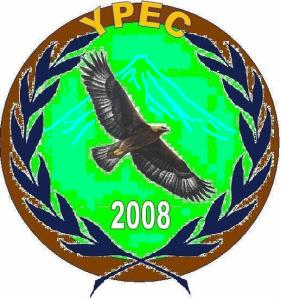G.R. No. 170491 April 4, 2007
Chico-Nazario,
J. Third Division
Facts:
M/V Dibena Win, a vessel of foreign registry owned and
operated by private respondent Bangpai Shipping, Co., allegedly bumped and
damaged petitioner’s Power Barge 209 which was then moored at the Cebu
International Port. Petitioner filed before the Cebu RTC a complaint for
damages. Petitioner later impleaded herein private respondent Wallem Shipping,
Inc., as additional defendant.
Petitioner, after adducing evidence during the trial of the
case, filed a formal offer of evidence consisting of Exhibits "A" to
"V" together with the sub-marked portions thereof. Consequently,
private respondents filed their respective objections to petitioner’s formal
offer of evidence.
The Court found merit in the objections raised and the motion
to strike out filed respectively by the defendants. It denied admission of
petitioner’s Exhibits A, C, D, E, H, I, J, K, L, M, N, O, P, Q, R, and S on the
ground that the pieces of documentary evidence were merely photocopies of
purported documents or papers.
The record shows that the plaintiff has been given every
opportunity to present the originals of the Xerox or photocopies of the documents
it offered. It never produced the originals. The plaintiff attempted to justify
the admission of the photocopies by contending that "the photocopies
offered are equivalent to the original of the document" on the basis of the
Electronic Evidence.
Further the Xerox or photocopies offered were not properly
identified by any competent witness and the loss of the principals thereof was
not established by any competent proof.
Issue:
Whether or not the photocopies offered as formal evidence
before the trial court are the functional equivalent of their original based on
the petitioner’s inimitable interpretation of the Rules on Electronic Evidence.
Ruling:
The instant petition was DENIED. The Decision of the Court of
Appeals was AFFIRMED.
The rules use the word "information" to define an
electronic document received, recorded, transmitted, stored, processed,
retrieved or produced electronically. This would suggest that an electronic
document is relevant only in terms of the information contained therein, similar
to any other document which is presented in evidence as proof of its contents.
However, what differentiates an electronic document from a paper-based document
is the manner by which the information is processed; clearly, the information
contained in an electronic document is received, recorded, transmitted, stored,
processed, retrieved or produced electronically.
A perusal of the information contained in the photocopies
submitted by petitioner will reveal that not all of the contents therein, such
as the signatures of the persons who purportedly signed the documents, may be
recorded or produced electronically. By no stretch of the imagination can a
person’s signature affixed manually be considered as information electronically
received, recorded, transmitted, stored, processed, retrieved or produced.
Hence, the argument of petitioner that since these paper printouts were
produced through an electronic process, then these photocopies are electronic
documents as defined in the Rules on Electronic Evidence is obviously an
erroneous, if not preposterous, interpretation of the law. Having thus declared
that the offered photocopies are not tantamount to electronic documents, it is
consequential that the same may not be considered as the functional equivalent of
their original as decreed in the law.
Furthermore, no error can be ascribed to the court a quo in
denying admission and excluding from the records petitioner’s Exhibits. The
trial court was correct in rejecting these photocopies as they violate the best
evidence rule and are therefore of no probative value being incompetent pieces
of evidence.
When the original document has been lost or destroyed, or
cannot be produced in court, the offeror, upon proof of its execution or
existence and the cause of its unavailability without bad faith on his part,
may prove its contents by a copy, or by a recital of its contents in some
authentic document, or by the testimony of witnesses in the order stated. The
offeror of secondary evidence is burdened to prove the predicates thereof: (a)
the loss or destruction of the original without bad faith on the part of the
proponent/offeror which can be shown by circumstantial evidence of routine
practices of destruction of documents; (b) the proponent must prove by a fair
preponderance of evidence as to raise a reasonable inference of the loss or
destruction of the original copy; and (c) it must be shown that a diligent and
bona fide but unsuccessful search has been made for the document in the proper
place or places. However, in the case at bar, though petitioner insisted in
offering the photocopies as documentary evidence, it failed to establish that
such offer was made in accordance with the exceptions as enumerated under the
abovequoted rule. Accordingly, we find no error in the Order of the court a quo
denying admissibility of the photocopies offered by petitioner as documentary
evidence.













No comments:
Post a Comment